Rusa, son of Argišti II
Introduction
Rusa, son of Argišti, was the son of Argišti II. Although there is general agreement that he ruled in the first half of the 7th century BC, there is still a dispute regarding his position in the order of royal succession. According to Salvini (2008: 23), he ruled before Rusa, son of Erimena, Sarduri, son of Rusa, and Sarduri, son of Sarduri. Several scholars have questioned this, arguing that Rusa, son of Erimena, ruled prior to Rusa, son of Argišti (see, particularly, Seidl 2004; Seidl 2007; Fuchs 2012; Kroll 2012, and Roaf 2012). As for the order of the individual rulers of the first half of the 7th century, various scholars have proposed a different possibilities (see the portal page "Introduction"). Regardless of where they stand on the order of succession, all researchers consider Rusa, son of Argišti, to be a contemporary of the Assyrian kings Esarhaddon and Assurbanipal.
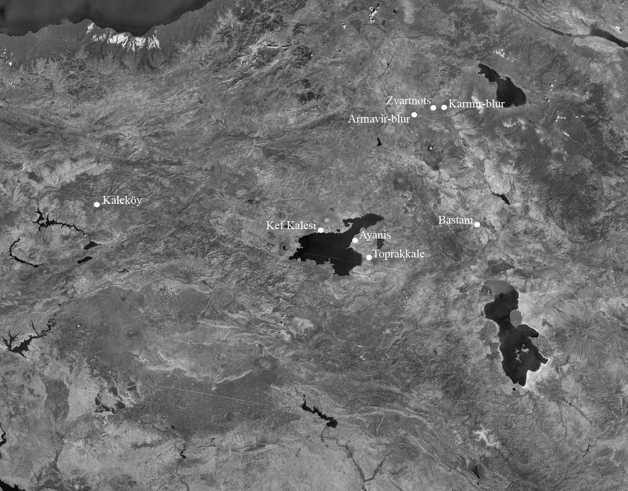
Map showing the distribution of the stone inscriptions of Rusa, son of Argišti II, in: Mirjo Salvini, CTU I: 564.
Royal titles
(I am) Rusa, son of Argišti, mighty king, king of the lands, king of the Bia lands, king of kings, lord of Ṭušpa-City. (A 12-6, lines 13-16)
Rusa, son of Argišti, is most famous for his work as a builder of fortresses, settlements, and temples, as well as for having been a significant administrator and reformer of the Urartian state. Like his predecessors, he combined the construction of fortresses with the agricultural development of their hinterland. In his inscriptions, Rusa, son of Argišti, gave accounts of the foundation and building of several settlements, fortresses, temples, and official buildings. These inscriptions were often carved into the façades or walls of their respective buildings. A particularly impressive example is inscription A 12-10, carved in relief into stone blocks which were apparently part of a banquet hall, which in Urartian is referred to by the term ašiḫusi.
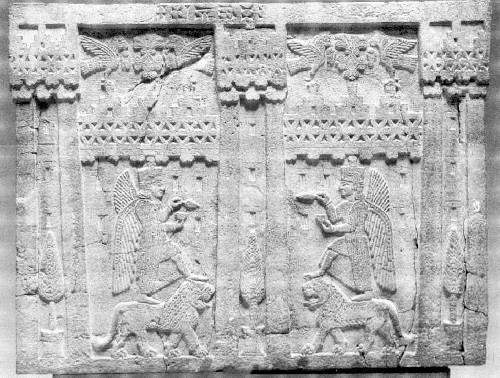
Stone block from Kef Kalesi with relief and an inscription reporting the building of a banquet hall (A 12-10), in: Mirjo Salvini, CTU III: 364.
Administrative achievements
Most of the administrative records written on clay tablets and clay bullae were found in settlements and fortresses founded by Rusa, son of Argišti. Due to this, Rusa is regarded as having reformed the Urartian state administration. Based on their contents and archaeological contexts, similar documents on clay found in older settlements can be connected to the reign of Rusa, son of Argišti (Salvini 2007: 465). Administrative texts and royal seal legends are also preserved in a hieroglyphic script comparable to Neo-Hittite hieroglyphs ("Urartian hieroglyphs" Salvini 1995, 203-206; Salvini, RlA 11: 465 and Salvini 2001, 292-307). So far royal seals are attested only for Rusa, son of Argišti (Salvini 2007: 465), but it may well be that royal seals of other rulers did exist, as we have seals of high officials, for example the seal impression of Erimena (as crown prince?).
Military activities
Neither Urartian nor Assyrian sources contain any hints of military campaigns led by Rusa, son of Argišti. From Assyrian texts we might believe that the two powers share a peaceful coexistence. In a letter to the god Assur, Esarhaddon stated that he had returned Urartian fugitives who fled to Šubria, a buffer state of great importance to the Assyrians since it secured Assyria's border with the Cimmerians in southeastern Anatolia (see also SAA 4: 22-23 No. 18). This letter may even indicate the existence of a treaty between Assyria and Urartu (Salvini 2007: 465). Fuchs has pointed out that over the course of Esarhaddon's short but contested accession, one of his rivals, Arda-Mulissi, fled to Urartu. He has argued that this might have contributed to a mutual relationship between Rusa, son of Argišti, and Esarhaddon, as Arda-Mulissu was an aspirant to the Assyrian throne and therefore a danger to Esarhaddon's reign (Fuchs 2012: 142-144).
Religious activities
Inscription CTU A 12-1 engraved on the façade of the Ayanis temple contains a description of the ritual offerings that should be carried out when building the foundation of a new building. CTU A 12-7 and A 12-8 include ritual offerings in connection with the water management of the "Umešini" canal.
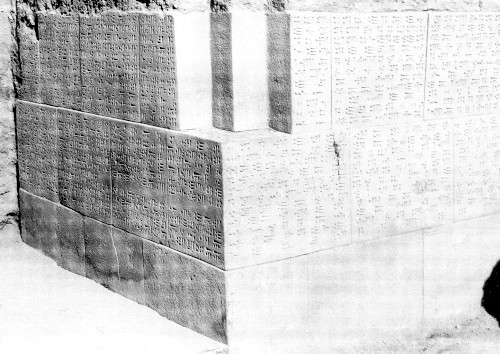
Ayanis temple inscription, in: Mirjo Salvini, CTU III: 339.
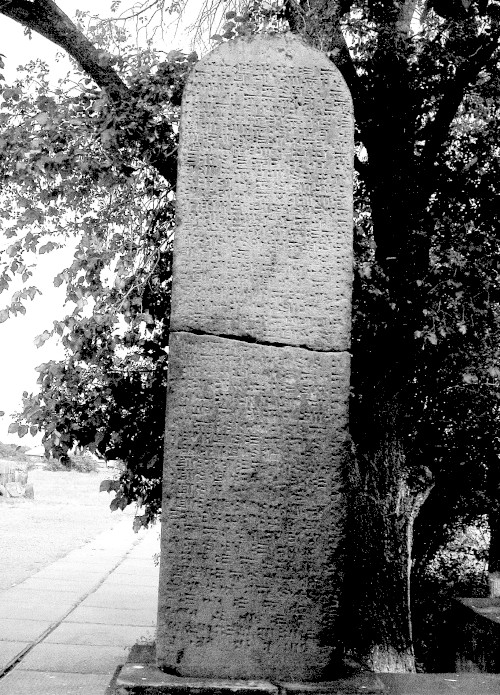
Stele from Zvarnoths, in: Mirjo Salvini, CTU III: 360.
Inscriptions on metal objects
Bronze objects were found in Ayanis (B 12-1 to 7 and 9 to 15; B 12A), Karmir-Blur (B 12-15 to 16), and Toprakkale (B 12-8 and 17-18). Three refer to being owned by Rusa, son of Arigišti, and mention the cities of Teišeba (lock bar; B 12-15) and the "Small city of Rusa respectively" (cup; B 12-16) and B 12-17 (offertory bowl). The majority of the objects are votive offerings to Haldi, such as shields (B 12-1 to 8), lances (B 12-9 to 10), cylinders (B 12-13AB), iron swords with bronze hilts (B 12-14A-E), and candelabras (B 12-18). B 12A is a golden staff that once belonged to Queen Qaquli, whose relationship to Rusa, son of Argišti has not been proven beyond doubt.
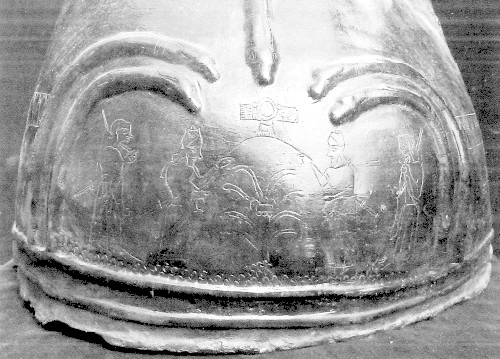
Helmet of Rusa, son of Argišti, with a votive inscription for the god Ḫaldi (B 12-9) (kept in the Museum of Van), in: Mirjo Salvini, CTU IV: 62.
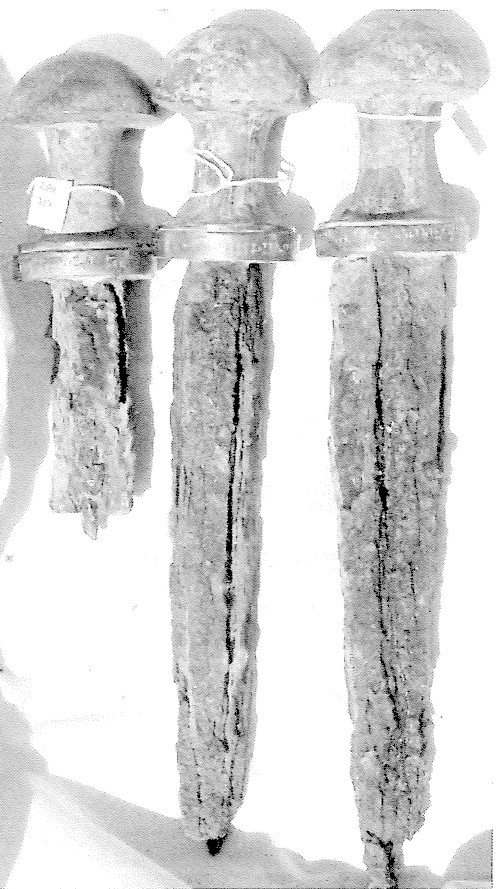
Swords of Rusa, son of Argišti, from Ayanis with a votive inscription to the god Ḫaldi (kept in the Museum of Van), in: Mirjo Salvini, CTU IV: 64.
Further reading
Birgit Christiansen
Birgit Christiansen, 'Rusa, son of Argišti II', Electronic Corpus of Urartian Texts (eCUT) Project, The eCUT Project, a sub-project of MOCCI, 2020 [http://oracc.museum.upenn.edu/ecut/urartianrulersandtheirinscriptions/rusasonofargitiiia12andb12/]